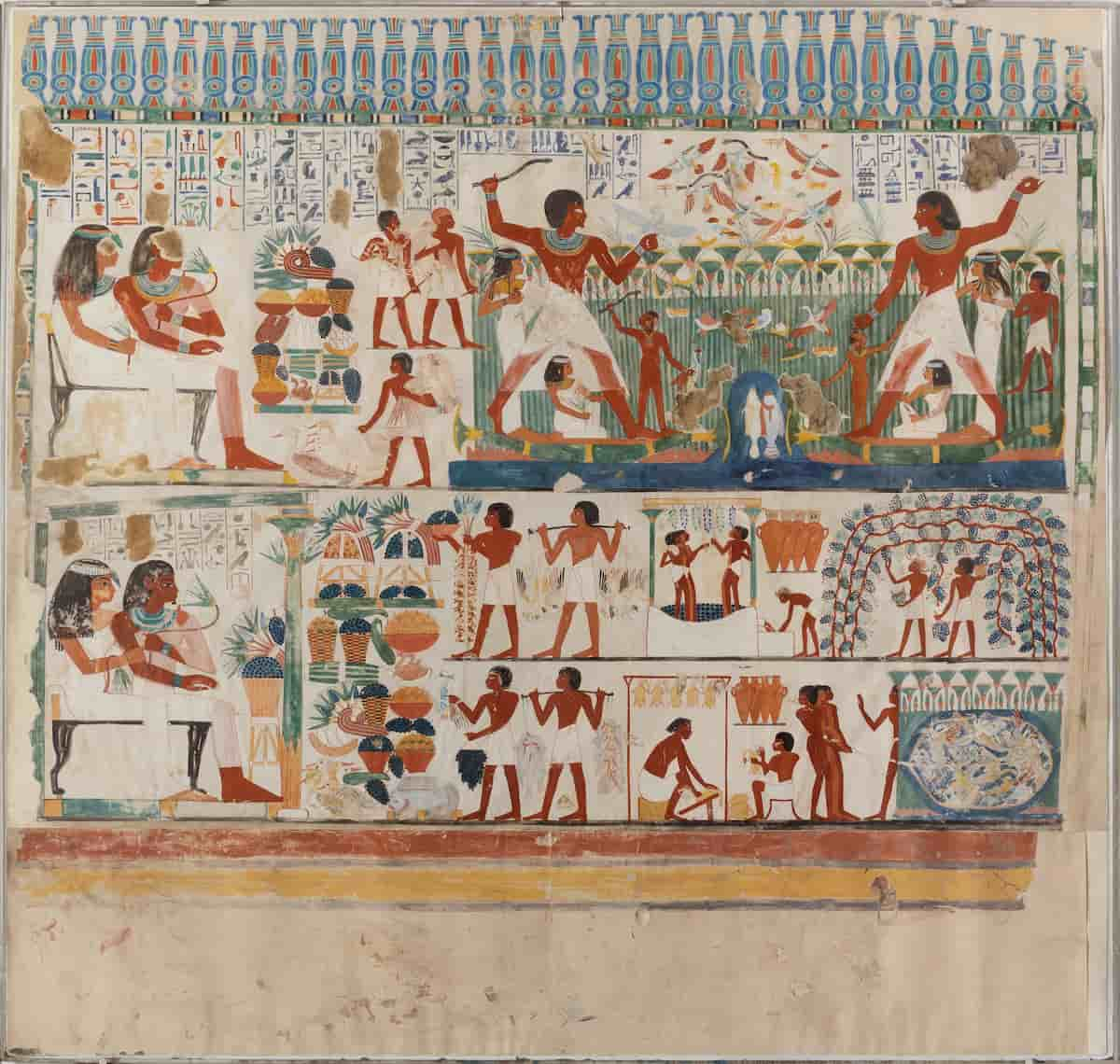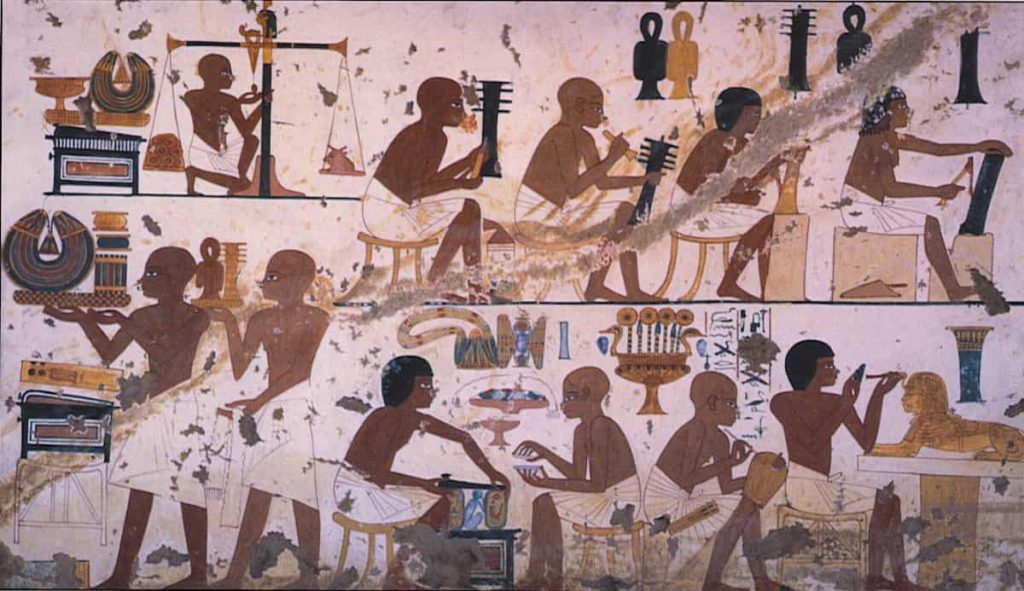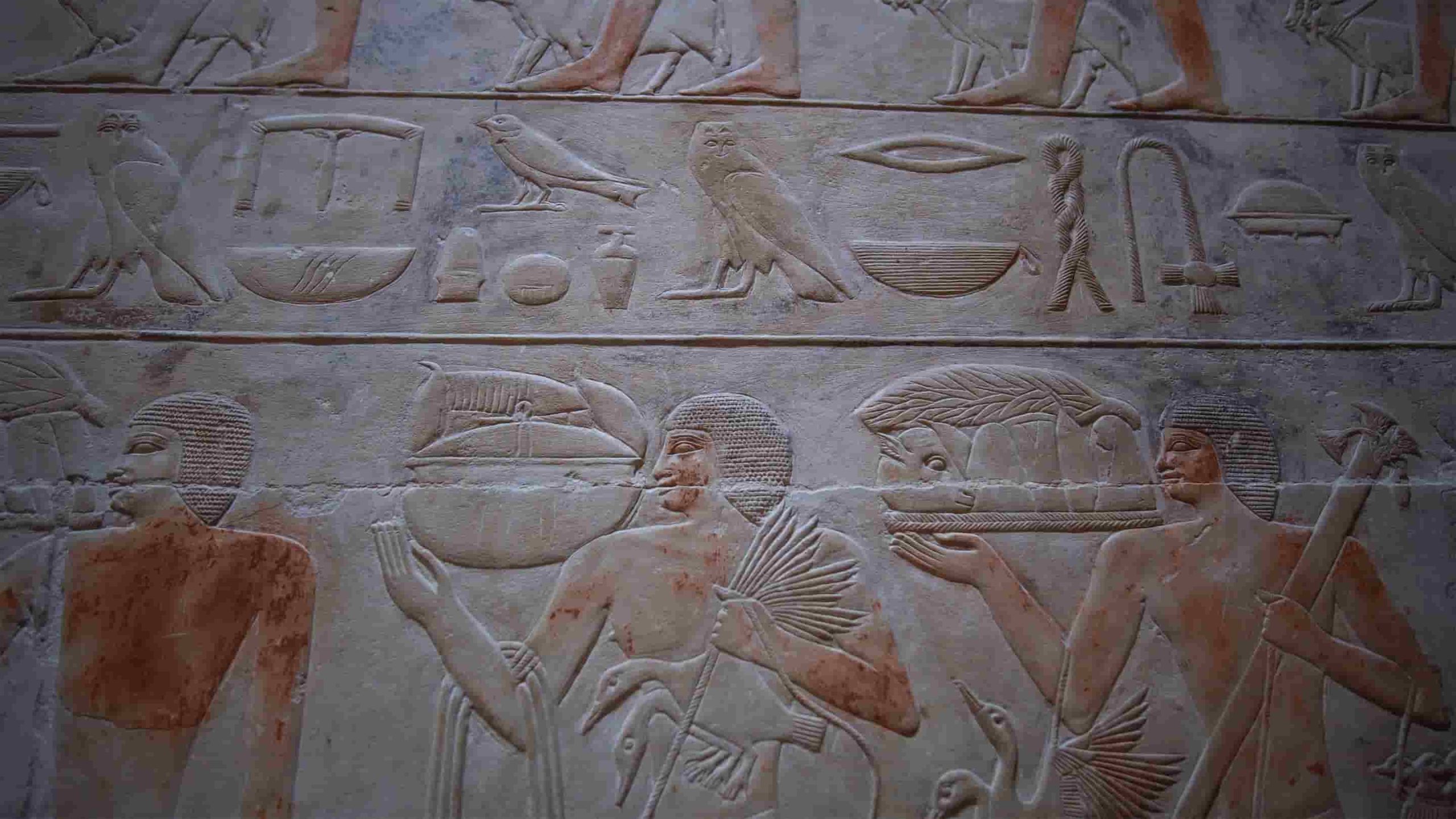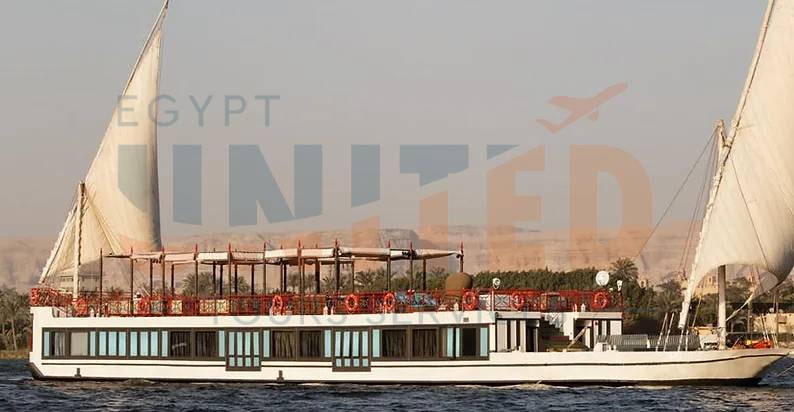10 Facts About The Ancient Egyptian Economy and Trade
Although ancient Egyptians didn’t use coins until the late period but they used a kind of barter system by using bags of grains and deben (An ancient Egyptian unit of measurement and weight). Workers receive a salary in grains. In the Ancient Egyptian economy and trade, a simple worker earns about 200 Kg of grains monthly..
Ancient Egypt Economy Facts

Ancient Egyptian economy
The prevailing system at that time was distinct from the rest of the political systems in use in the world at that time, such as the feudal system and the slavery system.
In the Ancient Egypt economy, the state had means of production, and the most important item was the land, which is the basis of agricultural economic activity. The state exploited farmers to support the agricultural economy.
The state’s role was to support slave owners and divide the work on agricultural land equally. And the producers are the farmers, and there is no occupational division of labor.
The Pharaoh in Egypt had great sanctity, as it meant the son of God, and he was dominant over everything. The Pharaonic society was divided into two classes:
- The ruling class: They are the leaders who had the power and hold state decisions, such as the pharaoh, senior officials, the army, and the priests.
- The ruled class served as state slaves, not as property of specific individuals (public slaves). Registered slaves lacked rights, working for the state for a wage. A group of craftsmen performed daily work essential to both the general public and the state, in areas like construction.
Tax and Administrative System
At the top of the economic pyramid, the pharaoh controlled the state through his ministers and officials and owned resources and land. There was a comprehensive tax system in place that collected manufactured goods and crops from the populace. Scribes were essential to this system because they diligently recorded everything from crop yields and tax obligations to granary stock
The Components Affecting The Establishment Of Economic Activities

Nile River
- Nile River: The development of the world’s oldest agricultural civilizations is a key driver of economic development and is used in agriculture.
- Stones and Minerals: They were a key factor in Egypt’s industrial renaissance, as well as in art and architecture.
The Economic Activities in Pharaonic Egypt

Egyptian Farmers
First Agriculture: The ancient Egyptians were brilliant in the field of agriculture because
- The foundation of the country’s prosperity and wealth.
- The most important source of income for the ancient Egyptians.
Agricultural life includes :
- Crops: it was a variety، achieve self-sufficiency, and the ancient Egyptians knew silos; these were silos for collecting and storing grain. They constructed them as cones with an opening. Workers climbed a ladder through this opening to place the grain.
- Agricultural ownership: All agricultural land in Egypt was owned by the Pharaoh. In addition, there was private ownership.
The Role Of The State In Agricultural Development:
- Establishing irrigation projects.
- Building dams.
- Increasing the area of agricultural land.
- Supervising irrigation projects and agricultural operations.
- Peaceful and firm management.
- Animal husbandry and hunting.
Second Industry
The ancient Egyptians invested available resources that they had, like wood, stones, and minerals. They also knew their characteristics and benefits, and were able to establish a strong industrial renaissance.
The Elements of Industrial Life in:
1-Egyptian craftsmen: The skill and expertise of some ancient Egyptian craftsmen reached the level of mastery and professionalism.
2- The most important ancient Egyptian industries include: stone, pottery, glass, metal, wood, papyrus-based industries, spinning and weaving, and leather.
Third Trade:
Egypt’s distinguished geographical location had an important impact on trade, helping connect Egypt with neighboring countries and establishing economic and trade relations with them.
Elements of business life:
- Internal trade thrived between Egyptian cities; different villages established markets, and barter formed the basis of commercial exchange.
- Foreign trade that took place between Egypt and: Phoenicia, Libya, ancient northern Sudan, and the land of Punt.
- Means of transportation include maritime and river, and land transportation.
The role of the state in developing trade:
-
- Establishing fortifications on Egypt’s borders.
- Establishing special administrations.
- Issuing laws to regulate markets.
- Implementing projects such as digging a canal in the rocks of the First Cataract and digging the Sesostris Canal.
Ancient Egyptian Economy and Trade: Easy Management
The notables of the estates and the estates were wealthy, but they worked hard to achieve this wealth. They were responsible for ensuring that their estates ran easily and that their unpaid indentured labor force was provided with adequate food, proper clothing, and shelter. In the towns where the pyramids at Giza were built, they fed them good beef and fish. This was one of the best perks of the unpaid indentured labor force that came from various estates across the country.
In Wadi al-Jarf, a papyrus was found that documents the reign of Khufu and a port on the Red Sea coast during the Old Kingdom. These texts contain a record of a captain named Merer. Captain Merrer transported men and goods in and out of Egypt. It tells us how he and his 40 men were involved in the pyramid construction, shipping stones from the quarries to the built site of the Great Pyramid at Giza.
The workforce, whether a royal official or a manual laborer hauling stones at a construction site, provided services to the throne and royal authority.
In return, the throne reciprocated the workers’ favors by redistributing food and other essential goods to the labor leaders. These leaders distributed them to those far below them on the social ladder. Also, only those at the top of the hierarchy could be rewarded with a state-sponsored funerary hall next to the king’s tomb.
Conclusion
Finally, Ancient Egyptian civilization’s economic system was distinctive and yet problematic. It consumed resources and energy primarily for the monumental construction and upkeep of tombs, pyramids, and temples, rather than solely for the sustenance of its people.
This inherently led to a class-based society, stratified into a privileged few—wealthy landowners and officials—and a disadvantaged, numerous poor.












